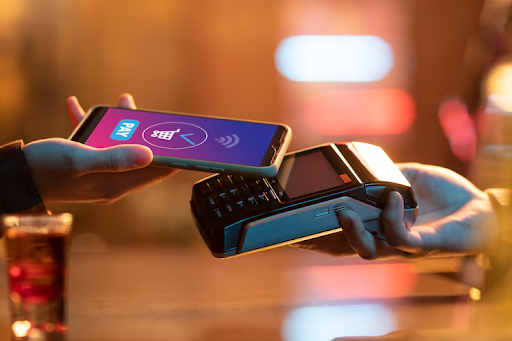Digital wallets have transformed how individuals manage their finances, offering convenience and security in an increasingly digital world. As these platforms evolve, so do the technologies ensuring their safety. Among the latest innovations, MPC (Multi-Party Computation) wallets stand out for their robust security features, leveraging AI (Artificial Intelligence) to enhance user authentication and protect sensitive data.
Understanding Digital Wallets and AI Integration
Digital wallets facilitate cashless transactions via mobile devices, replacing traditional payment methods with seamless, contactless options. AI technologies play a crucial role in enhancing these platforms by:
- User Authentication: Verifying user identities through biometrics (e.g., fingerprint scanning, facial recognition) and behavioral analytics.
- Fraud Detection: Analyzing transaction patterns in real-time to detect and prevent fraudulent activities.
- Personalization: Tailoring user experiences based on spending habits, preferences, and location data.
MPC wallet takes these capabilities further by distributing trust among multiple parties, ensuring that sensitive information remains secure even if one party is compromised. This approach minimizes vulnerabilities associated with centralized storage of data, making MPC wallets an attractive option for users prioritizing privacy and security.
AI-Powered Authentication in MPC Wallets
Authentication is a cornerstone of digital wallet security, ensuring that only authorized users can access funds and perform transactions. AI enhances authentication in MPC wallets through:
- Biometric Recognition: Verifying users based on unique biological traits like fingerprints or facial features, offering a higher level of security than traditional passwords.
- Behavioral Biometrics: Analyzing patterns in user behavior (e.g., typing speed, device orientation) to continuously authenticate users without interrupting their experience.
- Contextual Authentication: Using AI to assess transaction context (e.g., location, time of day) to determine the likelihood of fraud and adjust security measures accordingly.
By integrating AI-powered authentication, MPC wallets strengthen security while maintaining user convenience, adapting to evolving threats and user behaviors in real-time.
Role of AI in Fraud Detection and Prevention
Fraud remains a significant concern in digital payments, prompting continuous innovation in fraud detection technologies. AI enhances fraud detection in MPC wallets by:
- Pattern Recognition: Analyzing transaction patterns and historical data to identify anomalies indicative of fraudulent activities.
- Machine Learning Algorithms: Training models to detect emerging fraud patterns and adapt defenses proactively.
- Real-time Monitoring: Monitoring transactions in real-time to swiftly respond to suspicious activities and prevent financial losses.
MPC wallets leverage AI’s capabilities to minimize fraud risks, offering users peace of mind while conducting secure transactions across various platforms and devices.
Personalization and User Experience
AI-driven personalization enhances user experiences in MPC wallets by:
- Recommendation Engines: Suggesting relevant offers, promotions, and services based on user preferences and spending behaviors.
- Customer Support: Providing intelligent chatbots capable of resolving queries and issues promptly, improving overall customer satisfaction.
- Predictive Analytics: Anticipating user needs and behaviors to streamline transactions and optimize wallet functionalities.
These personalized features not only enhance user engagement but also foster loyalty by tailoring experiences to individual preferences and habits.
Challenges and Considerations
While AI offers transformative benefits to MPC wallets, several challenges must be addressed:
- Data Privacy: Ensuring compliance with data protection regulations (e.g., GDPR, CCPA) while leveraging user data for AI-driven insights.
- Bias Mitigation: Addressing biases in AI algorithms that may impact fairness and inclusivity in user interactions.
- Scalability: Managing AI infrastructure to accommodate growing user bases and transaction volumes without compromising performance.
Overcoming these challenges requires collaboration between stakeholders to develop ethical AI frameworks and robust security measures, ensuring responsible and effective deployment of AI in MPC wallets.
Future Directions
The future of AI in MPC wallets holds promising advancements, including:
- Enhanced Security Protocols: Integrating AI with blockchain technology for immutable transaction records and enhanced data integrity.
- Continuous Learning: Leveraging AI to adapt to evolving threats and user behaviors, ensuring proactive security measures.
- Cross-platform Integration: Facilitating seamless interoperability between MPC wallets and other digital payment solutions for enhanced convenience and accessibility.
As AI continues to evolve, its role in MPC wallets will expand, offering innovative solutions to complex security challenges and further enhancing user experiences in the digital payment landscape.
Conclusion
AI-driven advancements in MPC wallets are reshaping the landscape of digital payments, offering unprecedented levels of security, convenience, and personalization. By leveraging AI for authentication, fraud detection, and personalized user experiences, MPC wallets ensure that users can transact securely and confidently in an increasingly interconnected world. As technology evolves, AI will continue to play a pivotal role in enhancing the security and functionality of digital wallets, driving innovation and setting new standards for user-centric financial services.
Keep an eye for more latest news & updates on Internal Insider!










